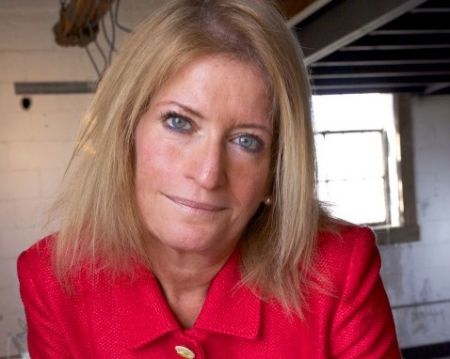Susan Glickman became Florida director for the Southern Alliance for Clean Energy in 2013 and is a key advocate for opening Florida’s solar energy market. And in a combative 15-month political duel for the sun, a statewide vote in August will be pivotal.
“The utilities demonstrated their willingness to use devious, underhanded tactics and spend unlimited amounts of money to hang on to their captive customers,” Glickman, a Tampa native, said in an email interview with The Daily Fray.
 A question for voters in August’s primary election — the Solar Tax Abatement Amendment — involves relief for taxpayers who want to install solar.
A question for voters in August’s primary election — the Solar Tax Abatement Amendment — involves relief for taxpayers who want to install solar.
Glickman: CS/HJR 193 and CS/HB 195 will advance solar by abating taxes on solar thereby lowering the cost of energy. Florida currently abates the ad valorem property taxes on residential solar. The amendment would expand that to include commercial projects and also abate the tangible personal property taxes that keep solar costs higher than they should be. If this amendment passes in August, the measure would be implemented in the 2017 Florida legislative session.
The Solar Choice amendment — which did not qualify enough signatures to be placed on the 2016 ballot — would have opened up the sale of electricity to third parties up to 2 megawatts. Florida is one of only four states where the law prohibits anyone other than a monopoly utility from selling electricity.
These two policy changes — abating taxes and opening up third-party sales — would shift Florida’s landscape and allow solar to flourish in the Sunshine State. While both important, they are different although the uniting thread is opening up the solar market.
The utilities were hard at work in the background. Always remember, the influence of enormous amounts of money that FPL, Duke, TECO and Gulf Power spend throughout the political process buys them outsized clout. They forced a change that stripped the implementing bill so that if voters approve the tax abatement, it has to come back to the legislature for implementation. 2017 would be a non-election year and the legislature can drag its heels and not take up the issue or design the rules of the game in an unfavorable way.
The fact that fewer people vote in a first primary than in a general election is not an excuse to not implement the measure. It was the utilities who demanded that the tax abatement be on the August ballot in the event that their “Sham Solar” amendment gets Supreme Court approval and is on the General Election ballot. Oral arguments took place at the Florida Supreme Court on March 7 and a decision is expected in the next few weeks.
The Solar Tax Abatement Amendment does not inherently impact the Solar Choice Amendment. Whether to try and place it on the 2018 ballot is still under consideration and the signatures are valid through 2016. The Solar Tax Abatement Amendment will exempt solar from certain taxes.
The utilities demonstrated their willingness to use devious, underhanded tactics and spend unlimited amounts of money to hang on to their captive customers. They cynically worked to confuse Florida voters and deny them their constitutional right to redress their government’s inaction on solar policy. The hugely diverse spectrum of organizations that came together was the strength of the Solar Choice campaign. The utilities had to swing into full gear hiring proxy front groups and consultants in an effort to mislead and confuse voters. The media called the utilities out on their tactics time and time again and a bright light was shone on their efforts to block consumers from accessing solar power in Florida.
 » 5=Q&A appears periodically in The Daily Fray, spotlighting people, issues, places and things. Comments: Editor@TheDailyFray.com.
» 5=Q&A appears periodically in The Daily Fray, spotlighting people, issues, places and things. Comments: Editor@TheDailyFray.com.
Outside
Bitcoin mining emissions in China will hit 130 million tonnes by 2024 https://t.co/w6He7so8N2 pic.twitter.com/qYUDtBdeRK
— New Scientist (@newscientist) April 9, 2021
The Gunk Report
For the Blue-Green Algal Bloom Weekly Update from the Florida Department of Environmental Protection, tap here. For DEP's Algal Bloom Sampling Map, tap here.
What, me worry?
» "PLAYING WITH SHARKS," which recently premiered at the Sundance Film Festival, documents diving legend Valerie Taylor.